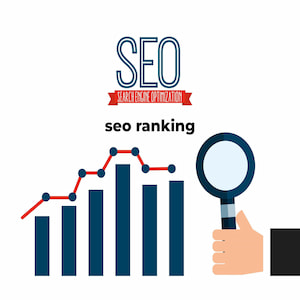Best Uses of AI in eCommerce Today

What Is the Best Use of AI in eCommerce?
Let’s cut to the chase: AI isn’t just a buzzword in the world of online retail anymore—it’s the beating heart of modern eCommerce strategy.
If you’re running a digital storefront and not tapping into the power of artificial intelligence, you’re leaving money on the table. Big time.
But where should you actually be using AI? That’s where it gets interesting.
Let’s dive into the smartest, most profitable ways brands like yours are leveraging AI to work smarter, sell faster, and scale stronger.
1. Personalized Shopping Experiences That Actually Convert
AI is the friend who knows exactly what you want before you even ask.
Think of the last time Amazon or Netflix recommended something freakishly spot-on. That’s no coincidence—that’s AI-powered personalization at work.
Why It Matters:
- Increase in conversion rates by 20-30% for businesses that use personalized recommendations (McKinsey)
- Reduces bounce rate and increases average order value
How It Works:
- Machine learning algorithms analyze user behavior (clicks, searches, purchases)
- Then serve dynamic product recommendations in real-time
Example:
Shopify stores using AI-powered tools like LimeSpot or Recom.ai are seeing tailored homepage displays, email recommendations, and even “smart bundles” that shoppers can’t resist.
2. AI Chatbots for 24/7 Customer Support
You can’t be everywhere at once—but your AI assistant can.
AI chatbots like Tidio, Drift, and Zendesk AI are now trained to handle thousands of customer queries—from shipping updates to product FAQs.
Why It Works:
- Handles 80% of routine questions without human input
- Reduces support costs while keeping response times under 10 seconds
Hot Tip: Combine chatbot tech with a human fallback to keep it real and reliable.
You’re not replacing your team. You’re giving them superpowers.
3. Inventory Management That Predicts the Future
No one likes running out of stock—or worse, holding too much dead inventory.
With AI inventory management, you can:
- Forecast demand more accurately
- Automatically reorder hot products
- Avoid costly storage fees
Tool Spotlight:
Tools like TradeGecko (QuickBooks Commerce) and Inventory Planner use machine learning to analyze sales history, seasonality, and even external factors like holidays or weather.
Pro Insight:
Some stores have seen a 35% reduction in overstock using predictive AI inventory systems.
4. Dynamic Pricing That Competes in Real-Time
Set it and forget it? Not anymore.
AI enables real-time price optimization, adjusting product prices based on:
- Competitor prices
- Demand trends
- Customer behavior
Benefits:
- Boosts sales volume without hurting margins
- Lets you react instantly to market changes
Real-World Use Case:
Airlines and Uber have used this for years. Now, even Shopify stores can use tools like Prisync or Intelligems for real-time pricing adjustments.
How do I use AI to promote my website?
5. Smarter Ad Targeting That Doesn’t Feel Creepy
Yes, AI is behind those eerily accurate Instagram ads.
But here’s the twist: today’s AI uses predictive analytics and behavioral segmentation to actually serve ads people want to see.
Tools to Watch:
- Meta Ads AI for targeting based on user intent
- Google Performance Max using AI to place your ads across multiple channels
Pro Tip:
Feed your AI ad system high-quality data from your CRM. Garbage in, garbage out.
6. Visual Search & AI-Powered Recommendations
Imagine snapping a photo of sneakers on the street—and instantly finding similar pairs online. That’s visual search AI in action.
Who’s Using It:
- ASOS lets users upload outfit pics for instant matches
- Pinterest Lens finds products from images
- Shopify apps now offer “Visual Search” plugins
Why It Matters:
Visual search bridges the gap between wanting something and finding it.
7. Fraud Detection & Secure Transactions
AI isn’t just about selling—it’s about protecting your brand too.
With AI fraud detection tools like Kount or Signifyd, you can:
- Spot unusual purchase behavior in real time
- Stop chargebacks before they happen
- Build customer trust
Did You Know?
AI can reduce fraud-related losses by over 50%, especially during high-volume events like Black Friday.
8. Voice Commerce: The Next Frontier
“Hey Alexa, order more oat milk.”
Voice commerce is growing—and AI is the brain behind it.
eCommerce brands are integrating with:
- Amazon Alexa
- Google Assistant
- Siri Shortcuts
Use Case:
Voice search AI suggests products, places orders, and handles reorders through voice alone.
Pro Insight:
Optimizing your product pages for voice SEO (natural questions, concise answers) is key to being found.
FAQs: What You Need to Know
Q1: What’s the most profitable use of AI in eCommerce?
A: Personalized product recommendations and dynamic pricing often show the highest ROI.
Q2: Is AI only for big brands like Amazon?
A: Not anymore. Tools like Shopify, WooCommerce, and BigCommerce now offer affordable AI plugins for small shops.
Q3: Can AI replace human customer service?
A: It can handle the basics 24/7, but human support still wins when empathy and complex problem-solving are needed.
Q4: Will using AI help my SEO?
A: Yes! AI tools like Jasper or SurferSEO help optimize content. Plus, faster responses and personalization reduce bounce rate—key SEO metrics.
Conclusion: Where You Go From Here
AI in eCommerce isn’t optional anymore—it’s essential.
Whether you’re just starting or scaling to the moon, there’s an AI-powered tool waiting to save you time, make you money, or protect your brand.
So here’s the deal: don’t try to use everything at once. Start where you need the most help—be it customer service, pricing, or personalization.
Make your first move today.
Try a chatbot. Test a smart pricing tool. Train a product recommendation engine.

